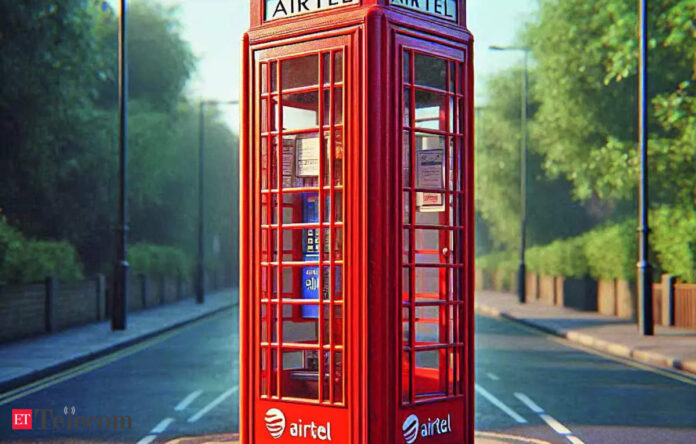In Short:
Two years after launching 5G, India’s telecom industry struggles to profit from it, focusing on Fixed Wireless Access (FWA) to connect homes and businesses due to low fiber broadband. Major players Jio and Airtel are expanding FWA services, targeting underserved households. Despite high hopes, 5G monetization remains unfulfilled, and the reliance on affordable pricing is slowing widespread adoption.
NEW DELHI: Two years after the commercial launch of 5G, the Indian telecom industry continues to look for effective ways to monetise these networks. A significant application in this regard is Fixed Wireless Access (FWA), which aids in connecting homes, enterprises, and small and medium businesses, particularly important in a country where fiber broadband penetration remains low.
Leading telecom operators, Reliance Jio and Bharti Airtel, have already rolled out FWA services for their customers to supplement their fiber-to-the-home (FTTH) offerings, a trend which mirrors developments in more advanced markets such as the United States. Despite these efforts, the broader challenge of monetising 5G remains largely unaddressed both in India and across the globe. This situation is in stark contrast to the 4G era, where telecom operators successfully leveraged increased data consumption driven by the popularity of audio and video content.
Neil Shah, Vice President of Counterpoint Research, noted, “FWA is definitely the number one opportunity with a potential addressable market of more than 100 million underserved households over the next five years. Even with a 50% penetration of these households by 5G FWA by 2027, we anticipate a revenue opportunity of approximately $6 billion per year.”
Telcos’ FWA Strategy
Jio aims to connect 100 million households by combining its 5G-driven fixed broadband with FTTH services, while Airtel plans to expand its 5G FWA AirFiber offering, which is currently available in 1,300 cities nationwide. Both companies are targeting a mix of consumer and enterprise clients.
According to Reliance Industries (RIL) in its latest annual report, small and medium businesses represent a sizable market opportunity, with Jio benefitting from a strong network presence through JioFiber and JioAirFiber. The report highlighted that “education institutes, retail stores, and professional services are key SMB cohorts where Jio has significant traction.” Notably, JioAirFiber has led to nearly 30% higher per capita data usage compared to traditional fiber offerings.
In a strategic move to capitalize on the FWA opportunity, Airtel’s Managing Director and CEO, Gopal Vittal, recently stated, “We now have a single pricing across fixed wireless access and fiber. Our sales teams and stores are trained to sell just WiFi, regardless of technology, and we have expanded our delivery teams to enhance geographic availability.” Vittal emphasized that FWA would serve to complement and broaden the addressable market size.
Innovative applications of 5G technology continue to emerge, such as connected ambulances for emergency healthcare, community clinics aimed at mass healthcare delivery, and the use of augmented and virtual reality in remote education.
‘5G Use Cases Largely Remain Theoretical’
Between 2021 and 2024, Jio, Airtel, and Vodafone Idea (Vi) implemented two separate rounds of tariff hikes to recover investments made in 4G and 5G services and boost their average revenue per user (ARPU).
Sylwia Kechiche, Senior Director of Industry Analysis at Opensignal, remarked, “Many transformative applications of 5G are still in the pilot stages or remain theoretical, creating a gap between consumer expectations and reality.” She noted that this incongruity has resulted in skepticism among consumers and diminished enthusiasm for this technology.
“Despite the rapid adoption of 5G networks, monetisation remains a challenge. The industry is still in search of the ‘killer app’ that will enable operators to recoup their investments in 5G,” Kechiche added.
As of now, Jio and Airtel collectively boast over 100 million unique 5G users.
SP Kochhar, Director-General of the Cellular Operators Association of India (COAI), noted that the price sensitivity of the Indian market necessitates the availability of affordable 5G plans and devices. He suggested that 5G phone pricing should be comparable to that of 2G phones to encourage migration to 5G networks.
Challenges Ahead
The Indian government garnered approximately Rs 1.5 lakh crore from the country’s first 5G spectrum sale, which saw participation from Jio, Airtel, Vi, and Adani Data Networks. However, in the second auction, subdued bidding resulted in the sale yielding Rs 96,238 crore.
COAI has reiterated that the industry requires 1200MHz of spectrum in addition to its current holdings of 800MHz. This scarcity can potentially be addressed by allocating the 6GHz mid-band for mobile services.
The financial burden of acquiring 5G spectrum is a concern for Indian telecom carriers, which are already under strain from competitive pricing, regulatory fees, and past investments in 4G networks. Experts warn that this situation limits the operators’ ability to invest sustainably in 5G technology to meet an expected surge in data traffic.
“The cost of spectrum in India is relatively high and may deter operators from aggressive deployment, particularly for niche or emerging use cases that lack immediate profitability,” Kochhar explained.
According to Opensignal, only 44% of mobile towers are linked with fiber, which falls short of the National Broadband Mission’s target of 70% fiberised towers by 2025. The research firm indicates that wirelessly backhauling towers, especially using E-band, is impractical considering the scale of rollouts.
As of July 2024, India has 4.52 lakh 5G base stations, translating to 31 base stations per 100,000 inhabitants. In contrast, South Korea has 593 and the European Union 103, suggesting that the 5G network is still underdeveloped in many regions of India.
Additionally, the fees for right-of-way (RoW) permissions are not standardised, leading to unpredictable costs for carriers, which complicates financial planning and results in uneven 5G deployments.
Indian telecom operators remain uncertain about the immediate return on investment (RoI) from 5G services, as consumers tend to prefer affordable data plans. This circumstance restricts operators’ ability to charge premium pricing for 5G services, thereby limiting potential revenue. Both Jio and Airtel have maintained similar tariffs for 4G and 5G mobile services.
For average consumers, moving from 4G to 5G is perceived as a “natural upgrade” rather than providing a distinct value proposition. Prasad Karambelkar, Practice Head of Wireless Product Engineering and Services at Tata Elxsi, elaborated that this trend is likely to persist even in developed markets, keeping the adoption readiness among typical users relatively low in India.
Despite this, certain enterprises are recognising the greater value in 5G over 4G or Wi-Fi, as demonstrated by numerous emerging trials.
However, the pace of adoption for private 5G networks remains slow, primarily due to uncertainties surrounding spectrum allocation in India. Entities keen on establishing private networks can either lease airwaves from the Department of Telecommunications (DoT) or from telecom operators.
An industry executive, who requested anonymity, stated that Indian telcos are skeptical about directly granting airwaves to captive users and technology firms. “Companies like Adani and Infosys have expressed interest in private 5G spectrum, but there’s an ongoing debate over whether entities other than telecom operators should receive 5G spectrum allocations,” he stated.
Future Outlook
5G-Advanced is expected to become commercially available globally later this year, providing a platform for more demanding applications and immersive user experiences based on extended reality (XR). Furthermore, it aims to integrate artificial intelligence and machine learning enhancements across network components, including the Core, Radio Access Network (RAN), and network management layers.
Purushothaman KG, Partner and Head of Digital Solutions & National Telecommunications Leader at KPMG in India, noted, “5G-Advanced is the next evolutionary step that could introduce innovative wireless technologies, strengthening the 5G system foundation. However, it’s essential to evaluate the use cases and potential RoI.”
Opportunities for monetisation in the 5.5G era could stem from uplink traffic as activities like video uploading and conferencing become commonplace. Quality of service (QoS)-based pricing will be crucial for effective layered strategies, potentially leading to an uplift in average revenue per user (ARPU), as per Counterpoint Research.
“5G-Advanced technology, equipped with AI, is anticipated to enhance spectrum utilisation efficiency, particularly for TDD and sub-3GHz FDD bands. Indian operators may consider rolling out 5G-A by early 2027, with greenfield operators like Jio likely to take the lead. Airtel could leverage 5G-A and transition to 5G standalone (SA) in the years ahead,” Shah predicted.
According to Counterpoint, both Vi and government-owned Bharat Sanchar Nigam Limited (BSNL) must leapfrog to 5.5G-ready equipment to maintain competitiveness and consider re-farming 2G spectrum for newer 4G and 5G services.
While the discussion surrounding 5G monetisation continues, fixed broadband is emerging as a clear winner, enabling service providers to explore revenue-generating opportunities, such as bundling over-the-top (OTT) content, advertising, and smart home solutions.





